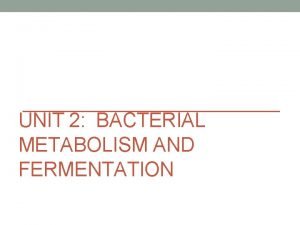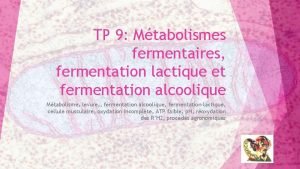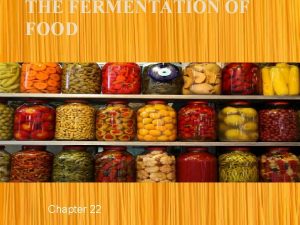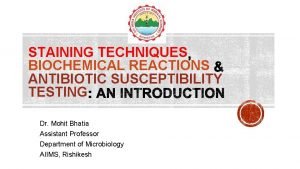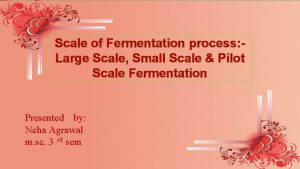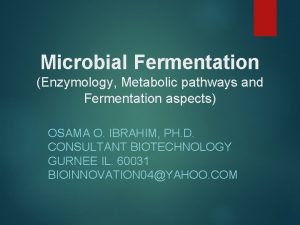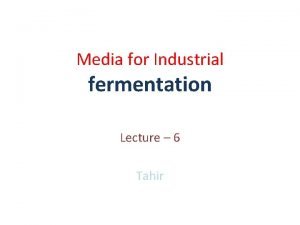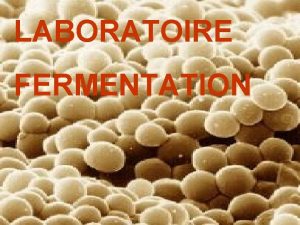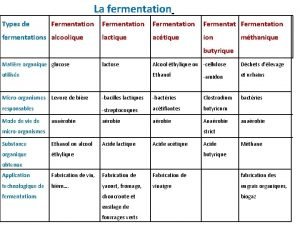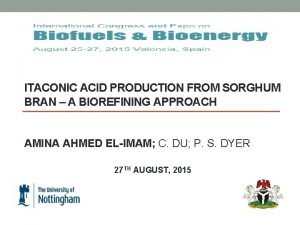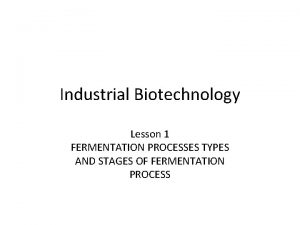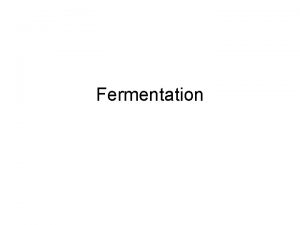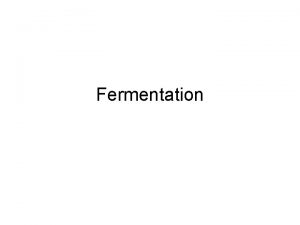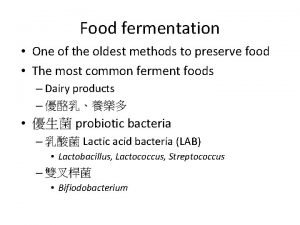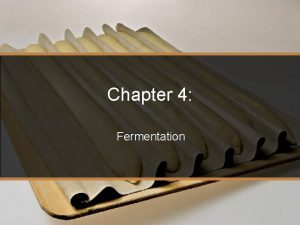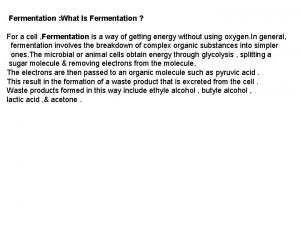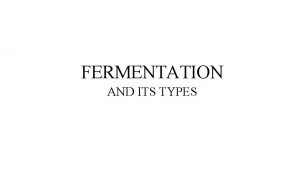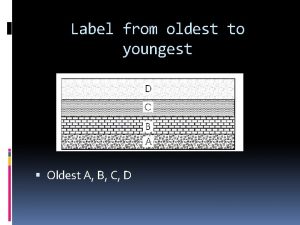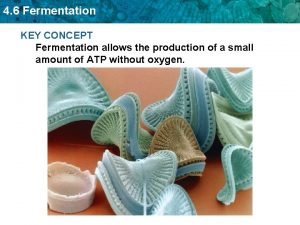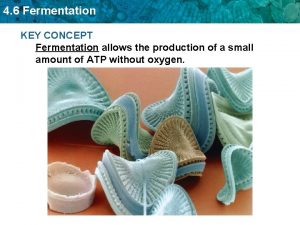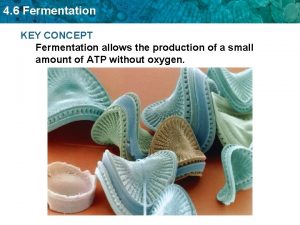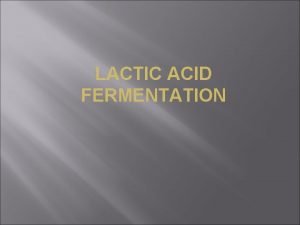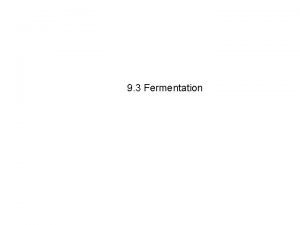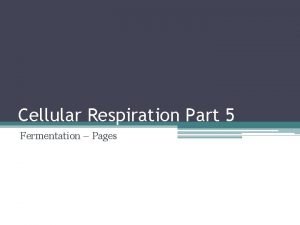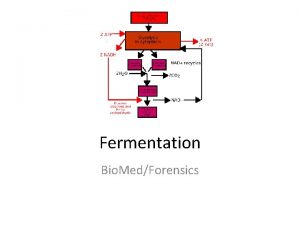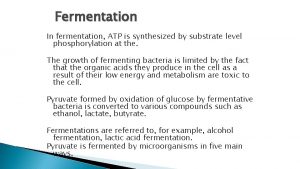Food fermentation One of the oldest methods to

























- Slides: 25

Food fermentation • One of the oldest methods to preserve food • The most common ferment foods – Dairy products – 優酪乳、養樂多 • 優生菌 probiotic bacteria – 乳酸菌 Lactic acid bacteria (LAB) • Lactobacillus, Lactococcus, Streptococcus – 雙叉桿菌 • Bifiodobacterium

objective – Inoculate lactic acid bacteria to ferment milk • Principles – Lactic acid bacteria is the main probiotic bacteria – After fermentation, physical and chemical properties such as texture, flavor, aroma, and p. H are changed. – Bacterial must be alive to offer the beneficial effects.

Materials and Methods • Reconstituted Milk – Milk powder + water • LAB culture Commercial yogurt – A菌: 嗜酸乳桿菌 (Lactobacillus acidophilus) – B菌: 雙叉乳桿菌(L. bifidus; Bifidobacterium lactis) • Each group choose their own culture • Each group has three tubes

– 味全優酪乳 ABLS • A菌-Lactobacillus acidophilus B菌-Bifidobacterium Iongum L菌-Lactobacillus bulgaricus S菌-Streptococcus thermophilus – 養樂多 Yakult代田菌(Lactobacillus casei Shirota) – 比菲多 Bifidobacterium bifidum – Each group must record the bacterial culture and ingredient in the product

Methods • Milk powder add water • Boiling for 1 -2 min • Separate the sanitized milk to the other sterile tubes • Each tube has 10 m. L milk • Each group has 6 tubes • Add about 0. 1 m. L of the bacterial culture or the commercial product into one tube • Incubate at 37℃

• After 24 incubation (11/17), take one and place the tubes in a refrigerator (4℃). • Keep fermenting. • After 48 (11/18) incubation, place the other tube into a refrigerator.

• On next Monday (11/23), observe the physiochemical characteristics of the products – p. H, texture, aroma, color, taste • Streak the fermented milk onto MRS plate

Lactobacilli MRS Agar and Broth • • • • Approximate Formula* Per Liter Proteose Peptone No. 3. . . 10. 0 g Beef Extract. . . . 10. 0 g Yeast Extract. . . . 5. 0 g Dextrose. . . . . 20. 0 g Polysorbate 80. . . . 1. 0 g Ammonium Citrate. . . . 2. 0 g Sodium Acetate. . . . 5. 0 g Magnesium Sulfate. . . . 0. 1 g Manganese Sulfate. . . . 0. 05 g Dipotassium Phosphate. . . 2. 0 g Agar. . . . . 15. 0 g p. H 6. 5 ± 0. 2

• p. H values in last year (24 hour fermentation) – Milk: 6. 641 – Yakult : 4. 572 – Unipresident- AB 3. 945 – 48 hour fermentation – Yakult: 3. 875 – Unipresident- AB: 3. 836 – p. Ka value of lactic acid: 3. 08

Streptococcus and Lactobacillus casei Shirota(養樂多)

Bifidobacterium Lactobacillus





homofermentation Glycolysis pathway Lactococcus, Streptococcus, Pediococcus, Some of Lactobacillus

heterofermentation Phosphoketolase pathway Leuconostoc Lactobacillus

Pyruvate (3) ethanol (2) + CO 2 Acetate Acetobacter Lactate (3) propionyl(3) -Co. A Propionate (3) Acetate + CO 2 propionate (3) Priopionibacterium Glycolysis pathway





Bacteriocin • inhibit the growth of similar or closely related bacterial strain(s) • Nisin – Lactococcus lactis – Inhibit Gram + or - ?


 Unit 2 food food food
Unit 2 food food food Grazing food chain diagram
Grazing food chain diagram Metal coping fpd
Metal coping fpd One god one empire one emperor
One god one empire one emperor Little dog run
Little dog run One king one law one faith
One king one law one faith One god one empire one emperor
One god one empire one emperor One team one plan one goal
One team one plan one goal See one do one teach one
See one do one teach one See one, do one, teach one
See one, do one, teach one Willow cabin speech
Willow cabin speech Studiendekanat uni bonn
Studiendekanat uni bonn Asean tourism strategic plan
Asean tourism strategic plan One vision one identity one community
One vision one identity one community Nutrition in bacteria
Nutrition in bacteria Tp fermentation
Tp fermentation Lactic acid fermentation sauerkraut
Lactic acid fermentation sauerkraut Smear bacteria
Smear bacteria Pilot scale fermentation
Pilot scale fermentation Classification of fermentation
Classification of fermentation Media for industrial fermentation
Media for industrial fermentation Fermentation in microorganisms
Fermentation in microorganisms Fermentation des glucides
Fermentation des glucides La respiration et la fermentation
La respiration et la fermentation Itaconic acid fermentation
Itaconic acid fermentation Define fermentation
Define fermentation














